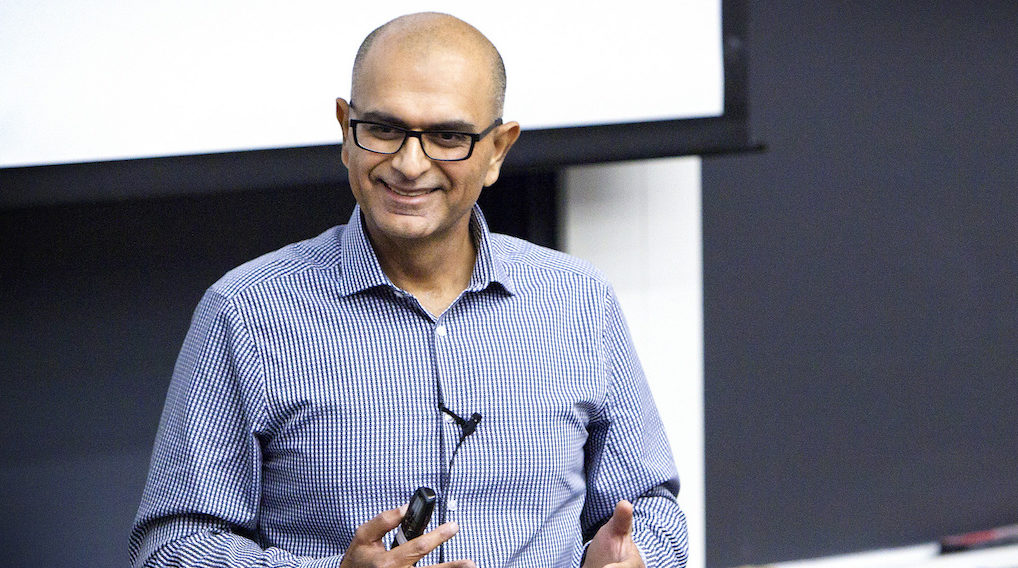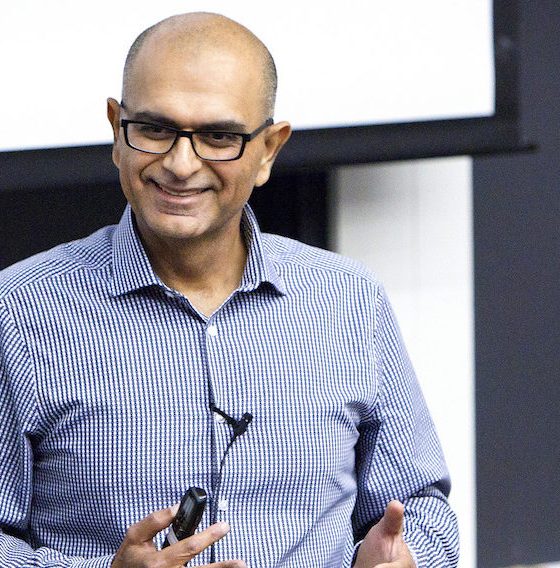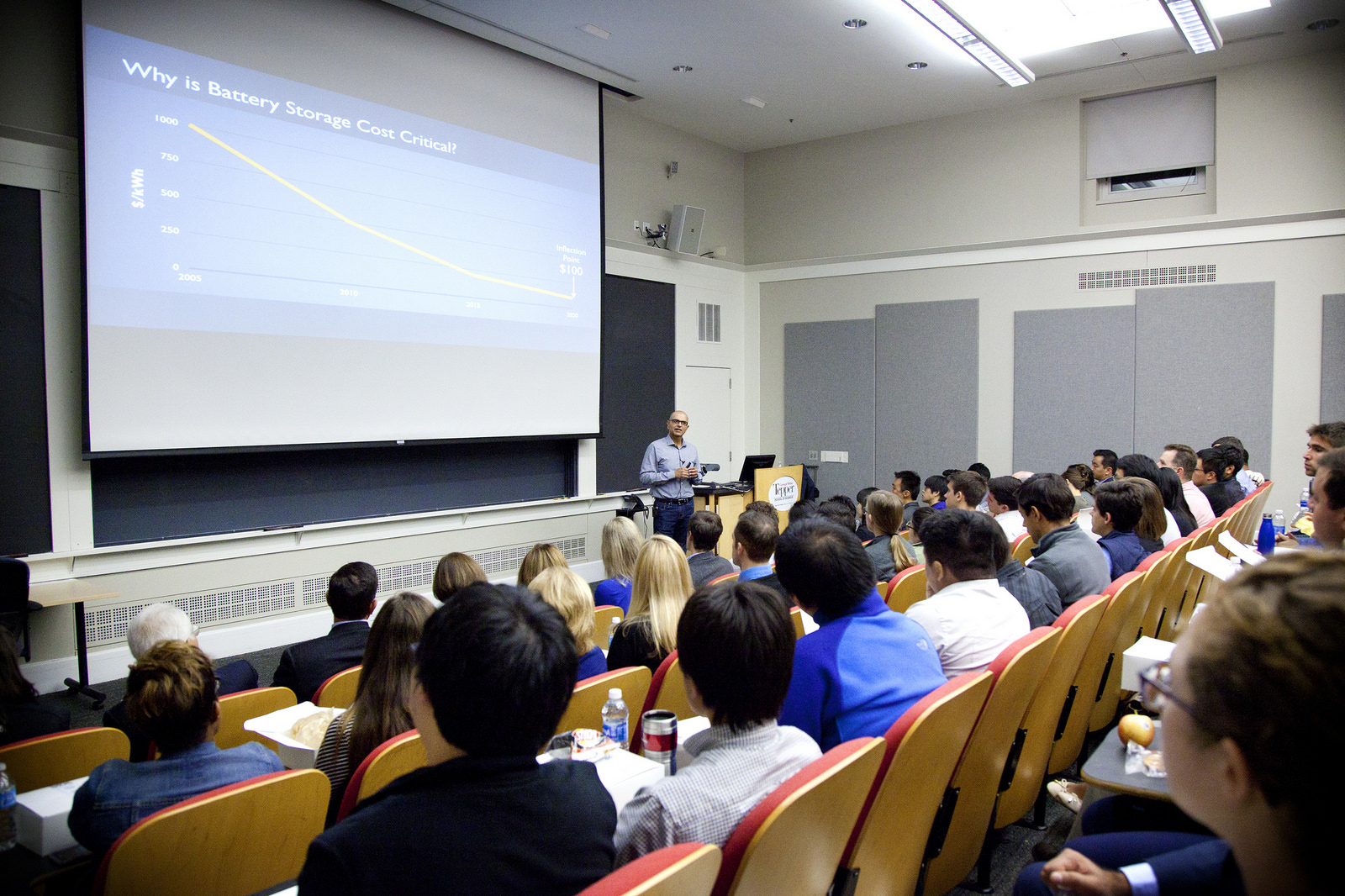

Investor's Corner
Tesla Q1 Earnings Call: The return of superstar CFO Deepak Ahuja
Deepak Ahuja may not be a household name, but he’s a key player in the storied history of Tesla [NASDAQ: TSLA]. He was the company’s first CFO, and was at the financial helm through the near-death experience of 2008 and the triumphant IPO in 2010. Ahuja retired in 2015. Jason Wheeler, Google’s former VP of Finance, took over for Ahuja but recently announced his departure in order to pursue interests in the public sector. In turn, Ahuja came out of retirement to become Tesla’s CFO once again. Today, you’ll hear Ahuja’s voice on Tesla’s much-anticipated earnings call.
Ahuja had originally left a comfortable position at Ford, and moved his family from Michigan to Silicon Valley, to join a company that at the time could only have been described as a quixotic startup. As was the case with other key execs, it was Elon Musk’s sincere commitment that convinced Ahuja to jump into the ocean. “Meeting Elon Musk, and understanding his vision of Tesla, was a game-changing moment in my life,” Ahuja recently told graduates at his alma mater, Northwestern University. “I felt passion about this opportunity in a way that I hadn’t felt before.”
Photo credit: TepperCMU
Tesla’s feats of acceleration tend to get most of the press, but expert financial guidance has been one of the keys to the company’s success from the beginning, so Mr. Ahuja’s contribution may have been (and be) greater than anyone outside the Tesla boardroom will ever know. Ahuja discussed some of his unique personal history and challenges working at Tesla as part of a panel discussion about ‘How to build unicorn companies’ in Silicon Valley.
In a recent presentation at Carnegie Mellon’s Tepper School of Business, Ahuja spoke about the gathering wave of disruption in the traditionally slow-moving auto industry. He discussed three major trends driving the transformation: electric vehicles, battery storage and autonomous driving. “We are at the early part of the steep S curve of innovation in each of these changes, which is what makes it really exciting.”
Above: Clips from Ahuja’s panel discussion (Source footage: diyatvusa / Vimeo)
From the beginning, Tesla has worked not only to make superlative cars, but also to transform the process by which those cars are produced. The company hired the best process and manufacturing engineers it could find. “What that enabled Tesla to do was to build completely new manufacturing processes in a cost-efficient manner, to get a better ROI than the other car companies,” Ahuja said.
For electric vehicles (EVs) to truly compete with legacy vehicles, everyone agrees they need to get cheaper. The key to that, says Ahuja, is reducing the cost of energy storage. He estimates that a cost of $100 per kilowatt hour could be achieved within five years, and predicts that this will be “the natural inflection point at which EVs become an economic no-brainer.” This milestone will be “really transformational” for the industry.
Autonomous driving will also disrupt the motor trade in many ways. Ahuja points out that 95 percent of auto accidents are caused by human error, so autonomous cars will help reduce medical and insurance costs. They will also use transportation infrastructure more efficiently, because cars will be able to travel faster and closer together. “The thing to keep in mind is that self-driving cars don’t have to be perfect to change the world,” says Ahuja. “They just have to be better than human beings.”
A big thanks to EVANNEX for providing us with this story. This story was originally published on their site at EVANNEX.com

Investor's Corner
Tesla stock closes at all-time high on heels of Robotaxi progress

Tesla stock (NASDAQ: TSLA) closed at an all-time high on Tuesday, jumping over 3 percent during the day and finishing at $489.88.
The price beats the previous record close, which was $479.86.
Shares have had a crazy year, dipping more than 40 percent from the start of the year. The stock then started to recover once again around late April, when its price started to climb back up from the low $200 level.
This week, Tesla started to climb toward its highest levels ever, as it was revealed on Sunday that the company was testing driverless Robotaxis in Austin. The spike in value pushed the company’s valuation to $1.63 trillion.
Tesla Robotaxi goes driverless as Musk confirms Safety Monitor removal testing
It is the seventh-most valuable company on the market currently, trailing Nvidia, Apple, Alphabet (Google), Microsoft, Amazon, and Meta.
Shares closed up $14.57 today, up over 3 percent.
The stock has gone through a lot this year, as previously mentioned. Shares tumbled in Q1 due to CEO Elon Musk’s involvement with the Department of Government Efficiency (DOGE), which pulled his attention away from his companies and left a major overhang on their valuations.
However, things started to rebound halfway through the year, and as the government started to phase out the $7,500 tax credit, demand spiked as consumers tried to take advantage of it.
Q3 deliveries were the highest in company history, and Tesla responded to the loss of the tax credit with the launch of the Model 3 and Model Y Standard.
Additionally, analysts have announced high expectations this week for the company on Wall Street as Robotaxi continues to be the focus. With autonomy within Tesla’s sights, things are moving in the direction of Robotaxi being a major catalyst for growth on the Street in the coming year.
Elon Musk
Tesla needs to come through on this one Robotaxi metric, analyst says
“We think the key focus from here will be how fast Tesla can scale driverless operations (including if Tesla’s approach to software/hardware allows it to scale significantly faster than competitors, as the company has argued), and on profitability.”

Tesla needs to come through on this one Robotaxi metric, Mark Delaney of Goldman Sachs says.
Tesla is in the process of rolling out its Robotaxi platform to areas outside of Austin and the California Bay Area. It has plans to launch in five additional cities, including Houston, Dallas, Miami, Las Vegas, and Phoenix.
However, the company’s expansion is not what the focus needs to be, according to Delaney. It’s the speed of deployment.
The analyst said:
“We think the key focus from here will be how fast Tesla can scale driverless operations (including if Tesla’s approach to software/hardware allows it to scale significantly faster than competitors, as the company has argued), and on profitability.”
Profitability will come as the Robotaxi fleet expands. Making that money will be dependent on when Tesla can initiate rides in more areas, giving more customers access to the program.
There are some additional things that the company needs to make happen ahead of the major Robotaxi expansion, one of those things is launching driverless rides in Austin, the first city in which it launched the program.
This week, Tesla started testing driverless Robotaxi rides in Austin, as two different Model Y units were spotted with no occupants, a huge step in the company’s plans for the ride-sharing platform.
Tesla Robotaxi goes driverless as Musk confirms Safety Monitor removal testing
CEO Elon Musk has been hoping to remove Safety Monitors from Robotaxis in Austin for several months, first mentioning the plan to have them out by the end of 2025 in September. He confirmed on Sunday that Tesla had officially removed vehicle occupants and started testing truly unsupervised rides.
Although Safety Monitors in Austin have been sitting in the passenger’s seat, they have still had the ability to override things in case of an emergency. After all, the ultimate goal was safety and avoiding any accidents or injuries.
Goldman Sachs reiterated its ‘Neutral’ rating and its $400 price target. Delaney said, “Tesla is making progress with its autonomous technology,” and recent developments make it evident that this is true.
Investor's Corner
Tesla gets bold Robotaxi prediction from Wall Street firm
Last week, Andrew Percoco took over Tesla analysis for Morgan Stanley from Adam Jonas, who covered the stock for years. Percoco seems to be less optimistic and bullish on Tesla shares, while still being fair and balanced in his analysis.

Tesla (NASDAQ: TSLA) received a bold Robotaxi prediction from Morgan Stanley, which anticipates a dramatic increase in the size of the company’s autonomous ride-hailing suite in the coming years.
Last week, Andrew Percoco took over Tesla analysis for Morgan Stanley from Adam Jonas, who covered the stock for years. Percoco seems to be less optimistic and bullish on Tesla shares, while still being fair and balanced in his analysis.
Percoco dug into the Robotaxi fleet and its expansion in the coming years in his latest note, released on Tuesday. The firm expects Tesla to increase the Robotaxi fleet size to 1,000 vehicles in 2026. However, that’s small-scale compared to what they expect from Tesla in a decade.
Tesla expands Robotaxi app access once again, this time on a global scale
By 2035, Morgan Stanley believes there will be one million Robotaxis on the road across multiple cities, a major jump and a considerable fleet size. We assume this means the fleet of vehicles Tesla will operate internally, and not including passenger-owned vehicles that could be added through software updates.
He also listed three specific catalysts that investors should pay attention to, as these will represent the company being on track to achieve its Robotaxi dreams:
- Opening Robotaxi to the public without a Safety Monitor. Timing is unclear, but it appears that Tesla is getting closer by the day.
- Improvement in safety metrics without the Safety Monitor. Tesla’s ability to improve its safety metrics as it scales miles driven without the Safety Monitor is imperative as it looks to scale in new states and cities in 2026.
- Cybercab start of production, targeted for April 2026. Tesla’s Cybercab is a purpose-built vehicle (no steering wheel or pedals, only two seats) that is expected to be produced through its state-of-the-art unboxed manufacturing process, offering further cost reductions and thus accelerating adoption over time.
Robotaxi stands to be one of Tesla’s most significant revenue contributors, especially as the company plans to continue expanding its ride-hailing service across the world in the coming years.
Its current deployment strategy is controlled and conservative to avoid any drastic and potentially program-ruining incidents.
So far, the program, which is active in Austin and the California Bay Area, has been widely successful.









